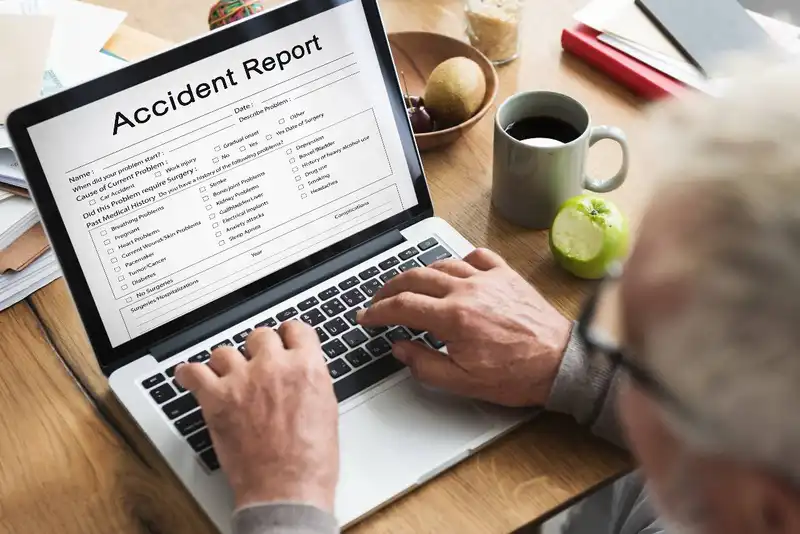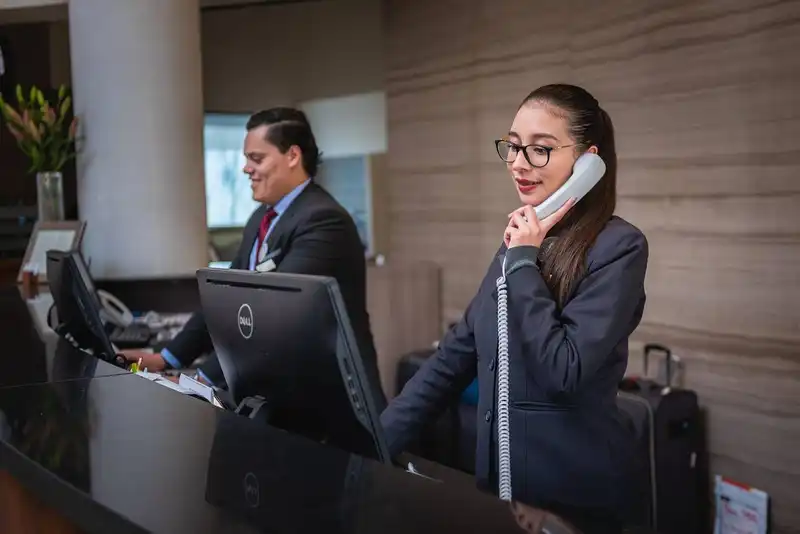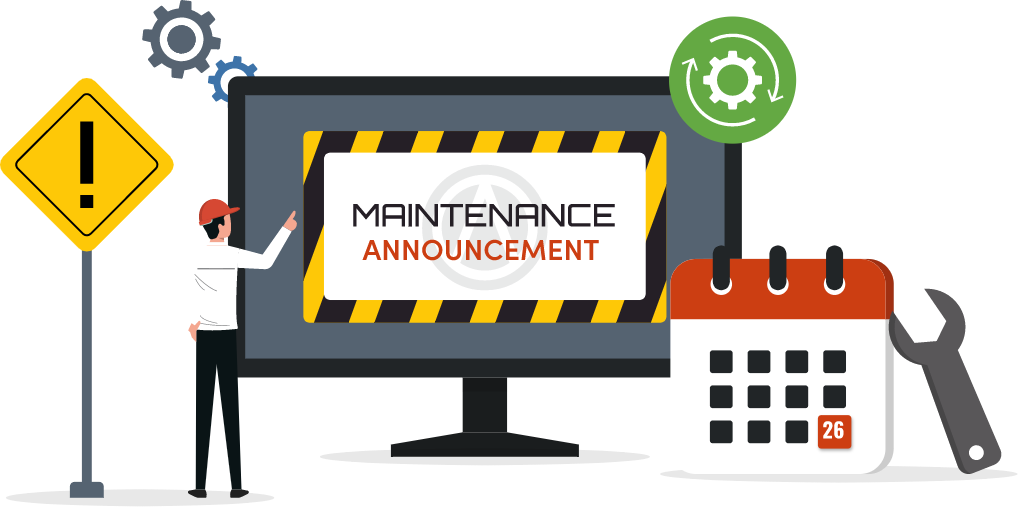What key information should every incident report include?
Every incident report should document the date, time, and location of the event; the people involved; the nature of the incident; witness statements; immediate actions taken; and any follow-up or corrective actions. Accuracy and objectivity are critical.
The Hotelier's Guide to Writing Effective Incident Reports
Overview
Running a hotel means managing countless moving parts - welcoming guests, ensuring smooth operations, and maintaining high standards of safety. Yet, even in the most well-run properties, unexpected incidents can happen. A guest may slip in the lobby, a staff member could suffer a minor injury, or a food-borne illness might be reported after a banquet. These moments are stressful, but how they are handled - especially how they are documented - makes all the difference.
Incident reports are more than just a formality. They are essential tools that protect your guests, safeguard your staff, and shield your business from unnecessary risk. A well-written report not only captures the facts of what happened but also sets the stage for corrective actions that prevent similar issues in the future. Without accurate documentation, hotels can face increased liability, strained relationships with guests, and even regulatory penalties.
For hotel owners and managers, learning how to create clear, effective incident reports is not simply about compliance - it's about creating a culture of safety and accountability. This guide will walk through the essentials of writing reports that are both thorough and practical, with a focus on the most common types of incidents in hospitality- injuries, guest complaints, foodborne outbreaks, and property damage.
The Core Purpose of an Incident Report

At its core, an incident report is not just a piece of paperwork - it is a structured record of an event that ensures accountability, transparency, and improvement within your hotel. Many hospitality business owners view reporting as a regulatory obligation, but its true value goes much further. A properly documented incident serves as both a shield and a road-map - it protects your hotel from liability while also providing guidance on how to prevent similar events in the future.
Think of it this way - without an incident report, memory becomes the only source of information. Staff recollections may differ, guests might recall events differently, and critical details can be lost. A written report eliminates these gaps by capturing the facts as close to the moment as possible. This level of accuracy is crucial for handling insurance claims, defending against legal disputes, and cooperating with health or safety authorities.
Beyond risk management, incident reports also support operational improvement. By reviewing past reports, patterns begin to emerge - whether it's frequent slip-and-fall accidents in the same area, repeated guest complaints about noise, or recurring kitchen issues that could lead to food-borne illnesses. These insights allow hotel owners and managers to implement targeted corrective actions, such as adjusting cleaning schedules, improving lighting, or strengthening food safety protocols.
Ultimately, the purpose of an incident report is twofold - to document the facts and to drive change. When used effectively, they shift the conversation from "what went wrong" to "how can we make sure this doesn't happen again?" That shift not only keeps your guests and staff safe but also strengthens your hotel's reputation as a reliable, responsible place to stay.
Elevate Food Safety, Simplify Compliance!
Experience Seamless Food Safety with Altametrics!
What Every Incident Report Must Include
For an incident report to be useful, it must capture the essential details of what happened in a way that leaves no room for confusion. A vague or incomplete report can create problems later - whether it's an insurance claim that gets delayed, a health inspection that raises concerns, or a guest complaint that escalates into legal action. The goal is to record the facts thoroughly, accurately, and objectively.
Here are the key elements every hotel incident report should include -
1. Date, time, and location of the incident - Specifics matter. Note the exact time and precise location, such as "near the poolside bar" or "Room 204 bathroom," rather than general terms.
2. People involved - Record names, contact details, and roles (guest, staff, contractor). This helps ensure clarity if follow-up is needed.
3. Nature of the incident - Describe what occurred- injury, food-borne illness, property damage, or guest complaint. Keep the description factual and avoid assumptions.
4. Witness statements - If others observed the incident, include their accounts. These perspectives can confirm details and strengthen accuracy.
5. Immediate actions taken - Document what was done on the spot, such as first aid given, cleaning of a spill, or notifying management.
6. Corrective or follow-up actions - Note what steps will be taken to prevent a repeat occurrence. This shows accountability and proactive management.
Clarity is key - stick to observable facts and avoid emotional language or blame. For example, instead of writing The guest was careless and slipped, a better phrasing is The guest slipped on a wet surface near the lobby entrance. This approach ensures reports remain professional, consistent, and credible.
How to Write with Clarity and Neutrality
When an incident occurs in a hotel, emotions often run high. A guest may be upset, a staff member may feel defensive, or management may worry about liability. That's why clarity and neutrality in incident reports are essential. The report is not the place for opinions, assumptions, or emotional wording - it is a factual record that can be relied upon later for decision-making, claims, or regulatory reviews.
The first rule is to stick to observable facts. Instead of writing, "The guest was drunk and aggressive," a more neutral version would be, "The guest was observed stumbling, raising their voice, and using offensive language toward staff." The difference is subtle but critical- the second description records behavior without making assumptions about cause or intent.
Clarity also means avoiding vague language. Phrases like "a little injured" or "some damage" leave too much open to interpretation. Instead, be specific- "The guest had a small cut on their right hand approximately 2 cm in length," or "The chair leg broke, causing the guest to fall."
Finally, neutrality protects both the guest and the hotel. A report should never read as though it is assigning blame. Empathetic yet factual wording helps maintain professionalism and reduces conflict. Clear, neutral documentation also ensures that if multiple people review the same report - whether insurance providers, health inspectors, or internal managers - they all see the same accurate account of what happened, free of bias or judgment.
Handling Different Types of Incidents

Not all incidents in a hotel look the same, and the way they are documented should reflect their unique nature. While the structure of an incident report remains consistent, the details you focus on will differ depending on the type of event. Recognizing these differences ensures that nothing important is overlooked.
1. Injuries
When a guest or staff member is injured, accuracy is critical for both medical and liability reasons. Document the exact nature of the injury, where it occurred, and what immediate care was provided. Include any hazards that contributed - such as a wet floor, poor lighting, or broken equipment - so corrective actions can be taken quickly.
2. Guest Complaints
Not all complaints involve physical harm, but they can be just as damaging to a hotel's reputation. Record the guest's concern in their own words as closely as possible. Note how staff responded, what solutions were offered, and whether the guest was satisfied. This helps management track recurring issues, such as noise, cleanliness, or service delays.
3. Food-borne Illness
If a guest or group reports symptoms after eating at the hotel, documentation must be meticulous. Record what was consumed, when symptoms began, and how many people were affected. Notify health authorities if required. Accurate reporting here protects both guest safety and your hotel's compliance with food safety regulations.
4. Property Damage
Whether it's a broken chair, a flooded bathroom, or damage to a guest's belongings, property-related incidents need clear details. Describe the extent of the damage, its possible cause, and whether it poses ongoing safety risks.
By tailoring your documentation to the specific incident type, you ensure your reports are not only thorough but also actionable, providing a solid foundation for prevention and corrective planning.
Stay Compliant, Elevate Your Business!
Discover Altametrics for Effortless Compliance Management
The Role of Corrective Action Plans
An incident report does not end with documenting what happened. Its true value lies in what comes next - using the information to create a corrective action plan. Corrective actions are the steps your hotel takes to prevent the same incident from happening again. Without this follow-through, incident reports become little more than files stored away, offering no real improvement for staff or guests.
A corrective action plan begins with identifying the root cause of the incident. For example, if a guest slipped in the lobby, was it due to a spill that wasn't cleaned quickly, or poor signage warning of a wet floor? If a food-borne illness was reported, was it tied to improper storage temperatures, cross-contamination, or a lapse in hand hygiene? Getting to the why helps determine the right solution.
Once the cause is clear, outline specific steps for improvement. These might include revising cleaning schedules, retraining staff on food safety, upgrading equipment, or adding safety signage. The plan should also include who is responsible for implementing the changes and a timeline for completion.
Data supports the value of corrective actions - industries that track and resolve incidents see significant reductions in repeat problems. In hospitality, this translates into fewer guest complaints, lower liability risks, and stronger guest satisfaction.
By pairing incident reports with corrective action plans, hotels create a feedback loop - document, analyze, improve. This approach not only addresses the immediate issue but also builds a safer, more reliable guest experience over time.
Paper vs. Digital Reporting
One of the most important decisions hotel owners face when it comes to incident reporting is whether to rely on traditional paper forms or move to a digital system. Both approaches have their advantages and drawbacks, and the right choice depends on your property's size, resources, and staff comfort level.
Paper Reports
Paper forms are simple, familiar, and require no training or technology. Staff can quickly jot down details and file them away. However, paper has clear limitations- forms can be misplaced, handwriting may be unclear, and accessing past reports for analysis is time-consuming. For hotels that need detailed records for insurance or regulatory purposes, paper-based systems can create unnecessary delays.
Digital Reports
Digital systems, whether through hotel management software or dedicated reporting tools, offer efficiency and accuracy. Reports can be submitted instantly from any device, photos can be attached for evidence, and information is stored securely in a centralized location. Digital systems also allow managers to spot trends, such as recurring slip-and-fall accidents or repeated food complaints, with far greater ease than flipping through binders. The drawback, however, is that they require an upfront investment and staff training.
Finding the Right Balance
The key is choosing a method that staff will consistently use. For smaller properties, paper might still work, but larger hotels often benefit from the efficiency of digital systems. Ultimately, the best system is the one that ensures every incident is captured clearly, stored safely, and accessible when needed.
Building a Culture of Consistent Reporting
Even the most detailed reporting system will only be effective if staff use it consistently. In many hotels, incidents go undocumented because employees fear being blamed, don't see reporting as a priority, or assume management doesn't follow up. Creating a culture of consistent reporting requires leadership, communication, and reassurance.
The first step is to make reporting a routine part of hotel operations. Train staff to understand that every incident, no matter how minor, deserves to be recorded. A small spill in the dining area or a guest's minor complaint might seem insignificant at the moment, but patterns emerge only when all events are tracked. Emphasize that incident reports are not about punishing staff - they are about protecting guests, improving safety, and supporting employees in their roles.
Managers also need to respond promptly and visibly to reported incidents. When staff see that their reports lead to corrective actions, they are more likely to continue documenting diligently. Recognition helps too- thanking staff for thorough reporting reinforces the idea that accuracy and accountability are valued.
Finally, foster an environment of trust and transparency. Encourage staff to report without fear of negative consequences, and remind them that consistent reporting helps everyone perform better. In the hospitality industry, where guest trust is everything, building this culture ensures that safety and service remain top priorities.
A hotel that commits to consistent incident reporting not only reduces risks but also demonstrates to guests and staff alike that their well-being is taken seriously. Over time, this culture becomes a competitive advantage - one rooted in responsibility, care, and professionalism.
Must-Read Content

How to Build an Effective Incident Management Process in Your Restaurant


The Essential Incident Reporting Checklist for Restaurant Owners










